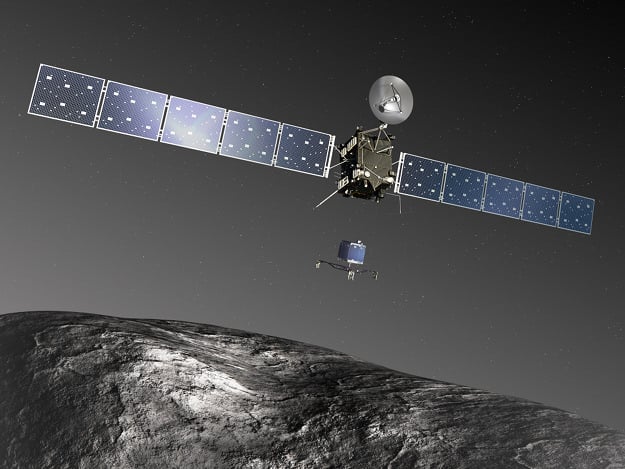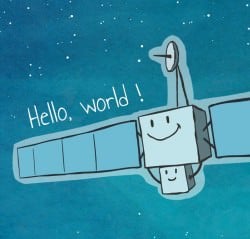Little Philae is awake! ESA sent a wake-up call to the 100-kg (220-lb)
lander
riding aboard the Rosetta spacecraft this morning at 06:00 GMT, bringing it out of its nearly 33-month-long slumber and beginning its preparation for its upcoming (and historic) landing on the surface of a comet in November.
Unlike Rosetta, which
awoke in January
via a pre-programmed signal, Philae received a "personal wake-up call" from Earth, 655 million kilometers away.
[caption id="attachment_110823" align="alignright" width="250"]
Hello, world! ESA's Rosetta and Philae comet explorers are now both awake and well![/caption]
A confirmation signal from the lander was received by ESA five and a half hours later at 11:35 GMT.
After over a decade of traveling across the inner Solar System, Rosetta and Philae are now in the home stretch of their ultimate mission: to orbit and achieve a soft landing on the inbound comet 67/P Churyumov-Gerasimenko. It will be the first time either feat has ever been attempted -- and hopefully achieved -- by a spacecraft.
Read more: Rosetta Spacecraft Spies Its Comet As It Prepares For An August Encounter
After Rosetta maneuvers to meet up with the comet in May and actually enters orbit around it in August, it will search its surface for a good place for Philae to make its landing in November.
With a robotic investigator both on and around it, 67/P CG will reveal to us in intimate detail what a comet is made of and really happens to it as it makes its close approach to the Sun.
– Matt Taylor, Rosetta project scientist
Meanwhile, today's successful wake-up call let the Rosetta team know Philae is doing well. Further systems checks are planned for the lander throughout April.
Watch an animation of the deployment and landing of Philae on comet 67/P CG below:
Source: ESA's Rosetta blog
Want to welcome Rosetta and Philae back on your computer? Download a series of ESA's "Hello, World" desktop screens here.
 Universe Today
Universe Today

